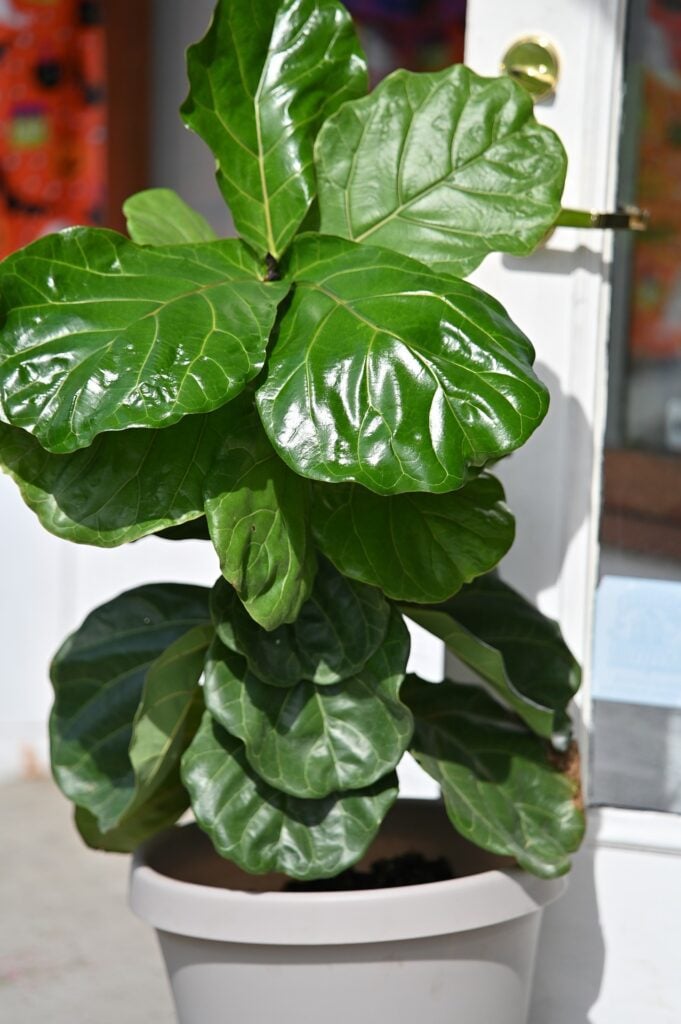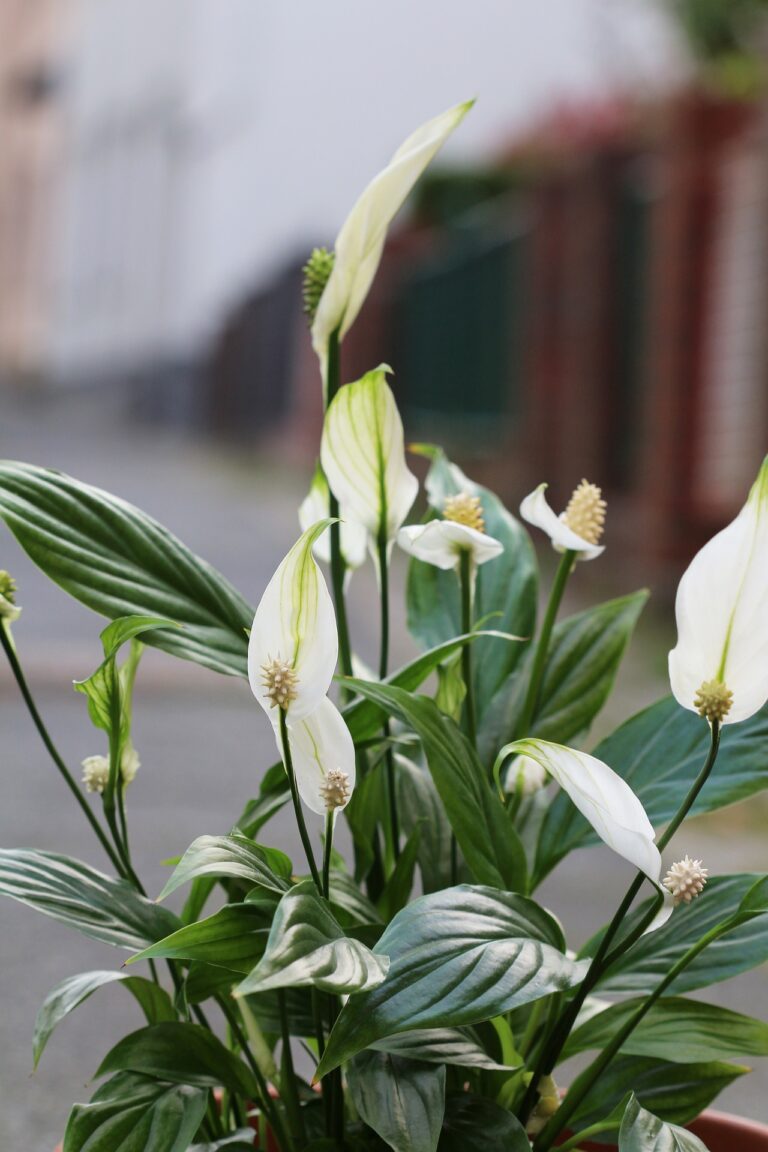Ficus Lyrata: A Comprehensive Guide To Growing And Caring For The Fiddle-Leaf Fig Plant
If you’re looking for a statement plant that can transform your space, look no further than the Ficus Lyrata, commonly known as the fiddle-leaf fig. This tropical West African plant is a popular indoor tree featuring large, heavily veined, and glossy violin-shaped leaves that grow upright on a sleek trunk. It can quickly spruce up any room and is perfect as a focal point if you can situate it in a floor-standing container where the plant is allowed to grow to at least 6 feet tall.

Taking care of a fiddle-leaf fig can seem daunting, but with the right knowledge, it can be a rewarding experience. The plant prefers bright indirect light or partial shade and moist, well-drained, loamy, acidic soils. It can grow up to 12-15 m (39-49 ft) tall, but there are also other varieties of the plant that don’t grow as tall and are bushier, such as ‘Suncoast’ and ‘Compacta,’ if you’re going for a different look. With proper care, your fiddle-leaf fig can grow to 6 feet or taller, making it a stunning statement piece.
Table of Contents
Description
If you’re looking for a striking and easy-to-care-for houseplant, the Ficus lyrata, also known as the fiddle-leaf fig, might be just what you need. This tropical tree has become a popular choice for indoor plant enthusiasts because of its large, broad, and lyre-shaped leaves that can measure up to 18 inches long.
Physical Characteristics
The Ficus lyrata is a small tropical tree that can grow up to 12-15 meters tall in its native habitat. However, as a houseplant, it typically grows to 2-10 feet tall. Its leaves are large, broad, and lyre-shaped, with prominent veins that promote photosynthesis and soak up humidity. The leaves are usually dark green and glossy, which gives them a striking appearance and makes them stand out in any room.
Habitat and Distribution
The Ficus lyrata is native to western Africa, from Cameroon west to Sierra Leone, where it grows in lowland tropical rainforest. It is a broadleaf evergreen tree that is sometimes grown in the tropics as an ornamental shade tree. In colder climates, it is a popular houseplant that can be grown indoors year-round.
Overall, the Ficus lyrata is a beautiful and easy-to-care-for houseplant that can add a touch of nature and elegance to any room. With its striking appearance and ability to thrive in a variety of environments, it’s no wonder that it has become one of the most popular houseplants in recent years.
Check out fiddle leaf figs on Amazon
Cultivation
If you’re interested in growing Ficus Lyrata, also known as the fiddle-leaf fig, it’s important to understand the plant’s cultivation requirements. Here are some key factors to consider when cultivating Ficus Lyrata:
Light and Temperature Requirements
Ficus Lyrata prefers bright, indirect light and temperatures between 60-75°F (15-24°C). Avoid direct sunlight, as it can scorch the leaves. If your plant isn’t getting enough light, the leaves may turn yellow and drop. If it’s getting too much light, the leaves may turn brown and crispy.
Watering and Fertilizing
Water your Ficus Lyrata when the top inch of soil is dry to the touch. Water thoroughly, but make sure the soil is well-drained to prevent root rot. Fertilize your plant every two to four weeks during the growing season (spring and summer) with a balanced fertilizer. Avoid fertilizing in the winter when the plant is dormant.
Soil Conditions
Ficus Lyrata prefers well-draining soil that’s rich in organic matter. Use a potting mix that contains peat moss, perlite, and vermiculite to ensure good drainage. Avoid using heavy, clay-based soils that can hold too much moisture and lead to root rot.
Propagation
Propagation of Ficus Lyrata is best done through air layering or stem cuttings. Propagation from seed is possible but is not recommended as it is difficult. Air layering involves making a cut in the stem and wrapping it in moist sphagnum moss until roots form. Stem cuttings should be taken from healthy, mature plants and should be at least six inches long with a few leaves attached. Dip the cut end in rooting hormone and plant in a well-draining potting mix.
By following these cultivation guidelines, you can successfully grow and care for your Ficus Lyrata.
Ficus Lyrata: A Quick Video Tutorial
If you’ve dealt with a ficus before, you already know the challenges that exist behind growing them. Yet as this video demonstrates, once you push the ficus lyrata’s genus-related challenges aside, a lot of the maintenance they require equate to good old fashioned horticultural common sense.
Pests and Diseases
When it comes to caring for your Ficus Lyrata, pests and diseases are a common concern. However, with proper care and attention, you can keep your plant healthy and free from infestations. In this section, we will discuss the common pests and diseases that can affect your Ficus Lyrata and how to deal with them.
Common Pests
Ficus Lyrata is susceptible to several pests, including:
- Spider mites
- Scale insects
- Mealybugs
- Aphids
- Whiteflies
- Fungus gnats
These pests can damage the leaves and weaken the plant, making it more susceptible to other diseases. To prevent and treat infestations, you can:
- Regularly inspect your plant for signs of pests
- Isolate infested plants to prevent the pests from spreading
- Use insecticidal soap or neem oil to treat the infestation
- Keep the plant in a well-ventilated area to discourage pests from settling
Common Diseases
Ficus Lyrata can also be affected by several diseases, including:
- Bacterial or fungal diseases
- Leaf scorch
To prevent and treat these diseases, you can:
- Avoid overwatering your plant, as this can lead to root rot and other fungal diseases
- Keep the plant in a well-ventilated area to prevent the buildup of moisture
- Prune any infected leaves or branches to prevent the disease from spreading
- Use a fungicide or bactericide to treat the disease
In conclusion, pests and diseases are a common concern when it comes to caring for your Ficus Lyrata. However, with proper care and attention, you can keep your plant healthy and free from infestations and diseases. Regular inspection, isolation, and treatment are key to preventing and treating infestations and diseases.
Conclusion
In conclusion, taking care of a Ficus Lyrata or Fiddle Leaf Fig requires some attention to detail, but it is not a difficult task. With the right amount of light, water, and soil, your plant can thrive and add a touch of green to your home or office.
Remember to place your Fiddle Leaf Fig in a spot that receives indirect sunlight to prevent leaf burn. Make sure to water your plant only when the soil is dry to the touch, and avoid overwatering as it can lead to root rot.
Additionally, fertilizing your Ficus Lyrata once a month during the growing season can help promote healthy growth. Use a balanced fertilizer and follow the instructions on the package.
If you notice any yellowing or brown spots on the leaves, it may be a sign of too much or too little water. Adjust your watering schedule accordingly and trim any damaged leaves to encourage new growth.
Overall, taking care of a Ficus Lyrata requires patience and attention, but the end result is a beautiful and healthy plant that can bring life to any space. Please check out the Indoor Trees Page for more varieties to suit your needs.



